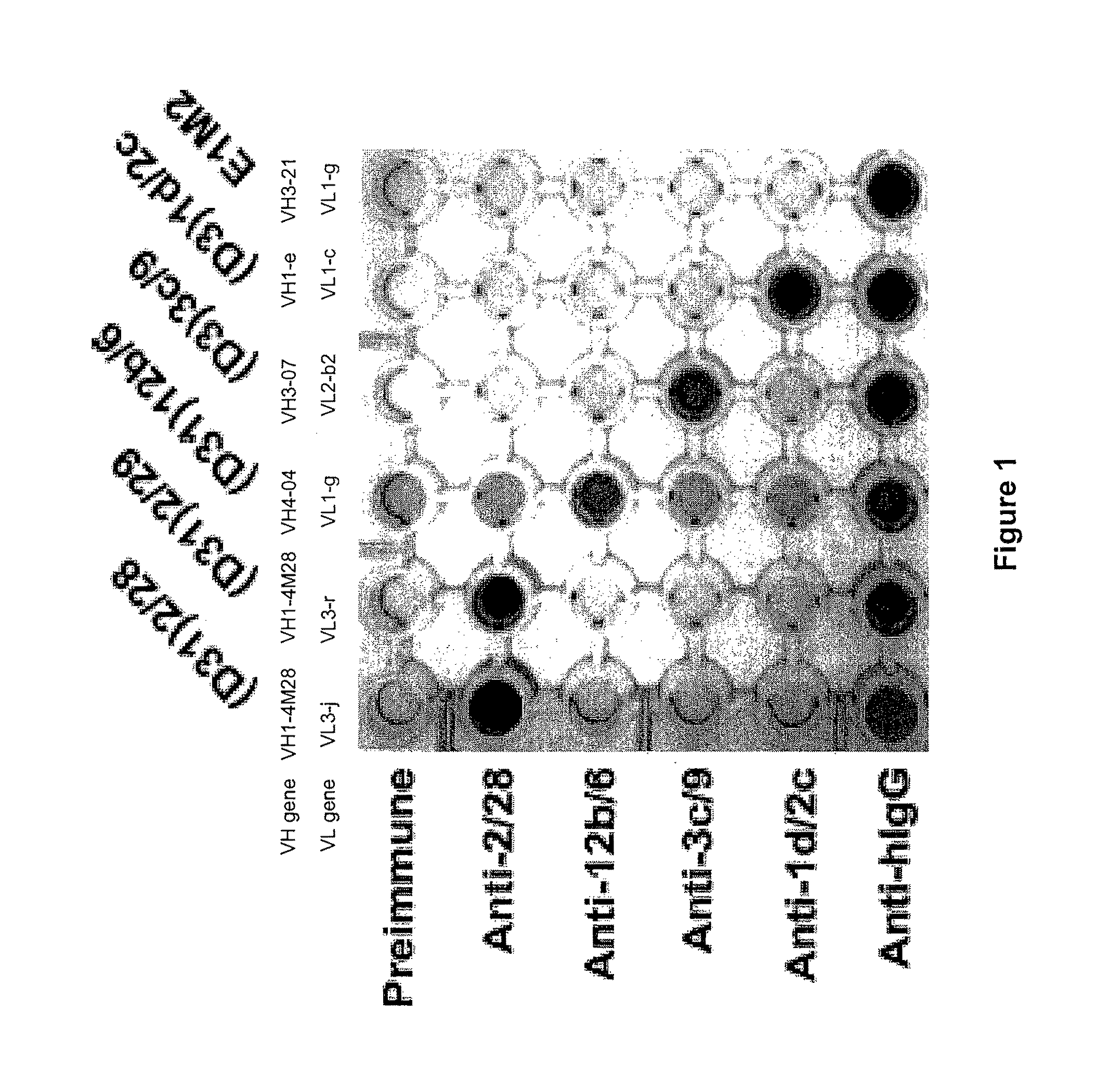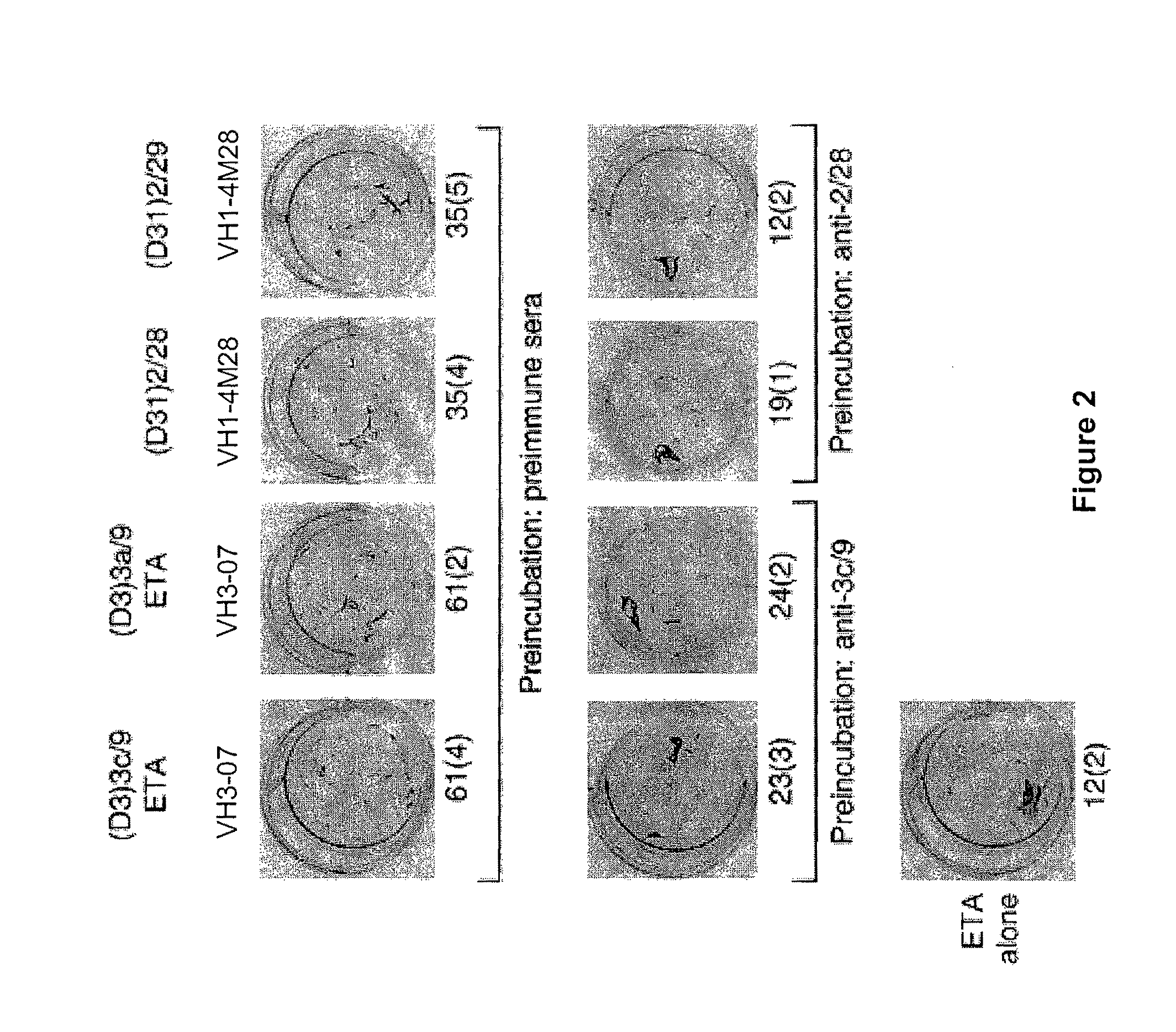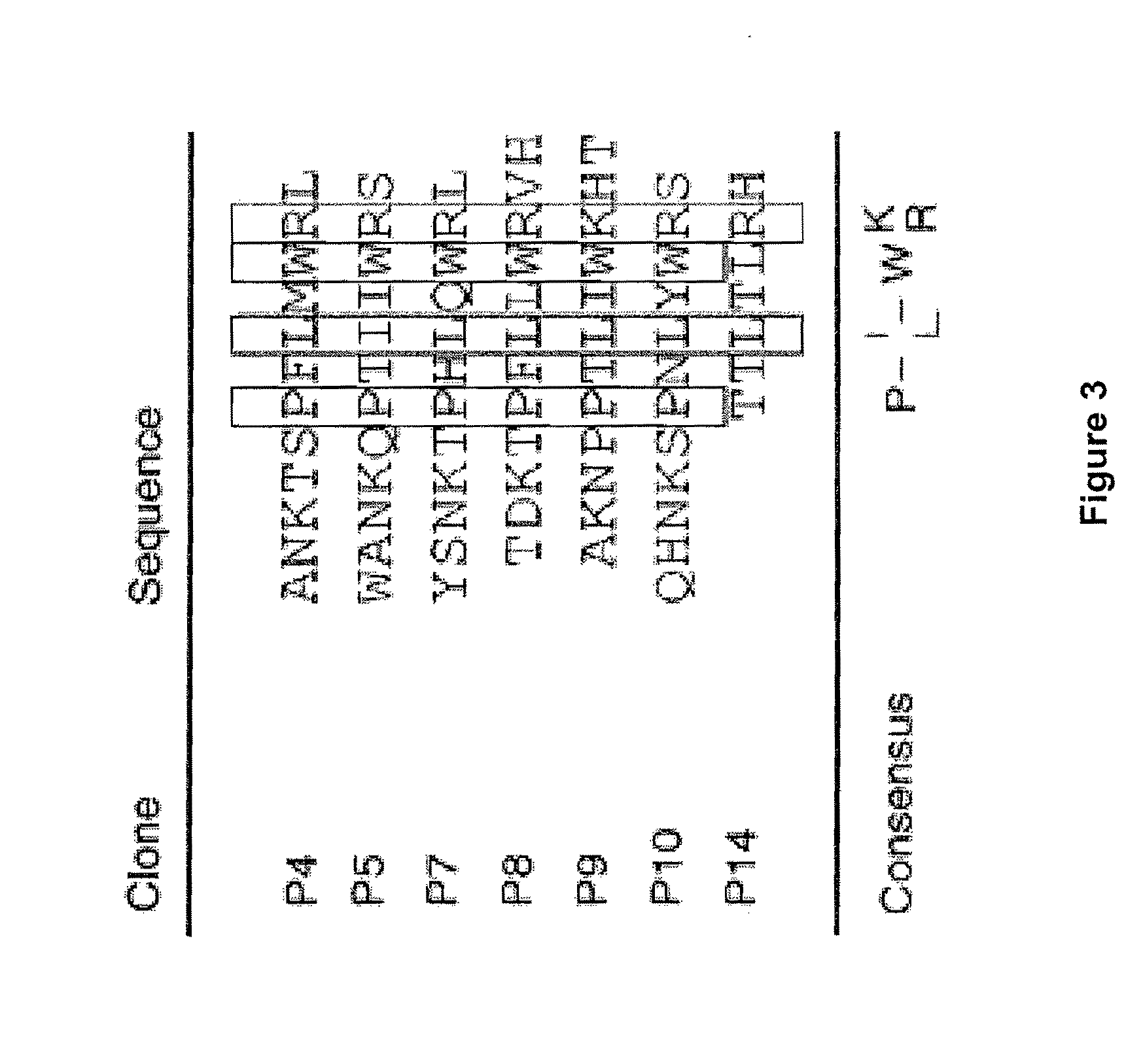Anti-autoimmune antibodies for treatment of pemphigus
a technology for anti-autoimmune antibodies and pemphigus, which is applied in the field of anti-autoimmune antibodies for treatment of pemphigus, can solve the problems of malnutrition and sepsis, not all anti-dsg antibodies cause disease, and mortality from pemphigus has decreased, so as to inhibit expression, inhibit binding, and inhibit expression
- Summary
- Abstract
- Description
- Claims
- Application Information
AI Technical Summary
Benefits of technology
Problems solved by technology
Method used
Image
Examples
example 1
Genetic Restriction of PV(1) mAb Library
[0252]Genetic analysis of 63 sequences from the PV(1) mAb library demonstrated 43 unique mAbs based on V(D)J gene usage, heavy and light chain combinations, and somatic hypermutation. However, these 43 unique mAbs were encoded by a total of only 7 variable heavy chain (VH) genes. When these antibodies were further subdivided by antigenic target and pathogenicity, only one to two VH genes were identified for each functional category (detailed in Table 1).
[0253]
TABLE 1VH gene restriction in the PV(1) phage display library.AntigenicspecificityVH genesPathogenicNon-pathogenicDsg 12VH3-8VH4-bDsg 33VH3-07VH3-30VH1-eDsg 3 +2VH1-4M28VH4-04Dsg 1TOTAL734
[0254]Each of the 43 unique mAbs used one of 11 different D genes and one of 2 different JH genes, but these gene usage patterns did not correlate with antigenic target or pathogenicity. Light chain gene analysis also demonstrated genetic restriction, with 9 different VL genes (Table 2A) combining with 3...
example 2
Production of Anti-Idiotype Antibodies Against Pathogenic and Non-Pathogenic PV mAbs
[0263]Recombinant pathogenic (D3)3c / 9, (D31)2 / 28 and nonpathogenic (D3)1d / 2c, (D31)12b / 6 single chain variable fragment (scFv) PV mAbs were produced and purified by nickel chelation chromatography as previously described (Payne et al., 2005). Rabbits were immunized with scFv preparations by a commercial vendor. The resulting rabbit antisera were first cleared against an irrelevant scFv and excess hemagglutinin peptide, followed by exhaustive clearing against polyclonal normal human IgG, in order to eliminate antibodies that reacted against non-idiotypic determinants.
[0264]ScFv antibody fragments express the monovalent antigen binding sites of native immunoglobulin molecules. To evaluate the ability of rabbit antisera to bind PV mAbs in their native form, scFv were converted to bivalent full-length IgG1 molecules using the PIGG vector. FIG. 1 demonstrates that the antiserum raised against (D31)2 / 28 (“...
example 3
Anti-Dsg Idiotypes Correlate with PV mAb VB Gene Usage
[0266]The phage display technique randomly pairs heavy and light chains during PCR construction of the scFv library, and thus mAbs isolated by phage display may not accurately reflect heavy and light chain pairings in vivo. If, however, the idiotypes of PV mAbs are displayed predominantly by the heavy chain, then development of anti-idiotypic reagents for pemphigus antibodies could be simplified.
[0267]To further characterize the specificity of anti-idiotypic antisera, each antiserum was tested for its ability to inhibit binding of various PV mAbs to Dsg antigens by ELISA. In initial experiments, dose response curves for anti-idiotypic antisera inhibition were established, using preimmune serum as a control. A dose dependent binding of antisera to bivalent PV IgG was detected by ELISA (FIG. 6). Subsequently, ELISA inhibition assays were performed to evaluate the ability of each antiserum to inhibit binding of various PV mAbs to Ds...
PUM
| Property | Measurement | Unit |
|---|---|---|
| concentration | aaaaa | aaaaa |
| pH | aaaaa | aaaaa |
| pH | aaaaa | aaaaa |
Abstract
Description
Claims
Application Information
 Login to View More
Login to View More - R&D
- Intellectual Property
- Life Sciences
- Materials
- Tech Scout
- Unparalleled Data Quality
- Higher Quality Content
- 60% Fewer Hallucinations
Browse by: Latest US Patents, China's latest patents, Technical Efficacy Thesaurus, Application Domain, Technology Topic, Popular Technical Reports.
© 2025 PatSnap. All rights reserved.Legal|Privacy policy|Modern Slavery Act Transparency Statement|Sitemap|About US| Contact US: help@patsnap.com



